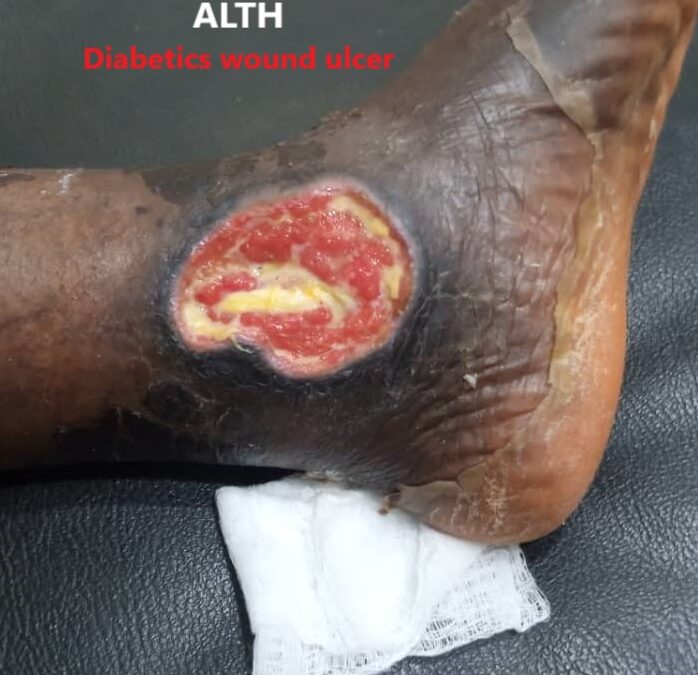What is diabetes?
Diabetes, how much do you about it, starting with the definition: is a chronic condition associated with abnormally high levels of sugar (glucose) in the blood. Insulin produced by the pancreas lowers blood glucose. Absence or insufficient production of insulin, or an inability of the body to properly use insulin causes diabetes.
Types of diabetes
- Type 1: This is common in children
- Type 2: This is seen in adolescent and adult
- Gestational diabetes: This affects pregnant women
Causes of diabetes
- Viral or bacterial infection
- Chemical toxins within food
- Obesity
- Living a sedentary lifestyle
- Bad diet
- Pancreatitis or pancreatectomy
- Glucagonoma
- Polycystic Ovary Syndrome (PCOS)
- History of smoking (either current or past)
- A malignancy (tumor or cancerous mass)
- Infections
- Certain medications
Food to avoid as a diabetic patient
Highly Processed Carbohydrates: Heavily processed carbohydrates, such as those made with white flour, white sugar, and white rice, are essentially whole foods stripped of important bran and fiber, as well as healthy vitamins and minerals.
Sugar-Sweetened Drinks: One of the best ways to minimize the effect of sugar on your health is to limit your intake of sugar-sweetened beverages, including fruit drinks. To stay hydrated, drink more water. Also, avoid loading up your coffee or tea with sugar and cream.
Saturated and Trans Fats: Unhealthy saturated and trans fats can increase cholesterol levels in the blood, and high cholesterol is a risk factor for type 2 diabetes.
Red and Processed Meats: Red meat and processed red meat are both linked to type 2 diabetes. Processed meats like bacon, hot dogs, and deli meats are particularly bad because of their high levels of sodium and nitrites.
Common symptoms of diabetes: Though, some people with diabetes have symptoms so mild that they go unnoticed.
- Urinating often
- Feeling very thirsty
- Feeling very hungry – even though you are eating
- Extreme fatigue
- Blurry vision
- Cuts/bruises that are slow to heal
- Weight loss – even though you are eating more
- Tingling, pain, or numbness in the hands or feet
Diabetes complications: Complications associated with diabetes include:
- Heart disease, heart attack, and stroke
- Neuropathy
- Retinopathy and vision loss
- Hearing loss
- Foot damage such as infections and sores that don’t heal
- Skin conditions such as bacterial and fungal infections
- Depression
- Dementia
DIABETES FOOT ULCER
If you’ve diabetes ulcers, it shows that your blood sugar levels are higher than normal. Over time, this can cause complications with other unusual bodily functions, especially around your feet. Foot ulcers are common complications of poorly, unhealthy management of diabetes ulcers, forming as a result of skin breaking down and exposing the skin layers underneath, it can grow worse and affect your bones if left unattended to.

Risk Factors for Diabetic Foot Ulcers
All diabetes patients are at risk of foot ulcers, however, there are other associated conditions to a diabetic foot ulcer, they include:
- Eye disease from diabetes
- Heart disease
- Kidney disease
- Obesity. (Diabetic foot ulcers are also most common in older men).
Some serious Diabetes ulcer Complications
Infections and ulcers (sores) that do not heal: An ulcer is a sore in the skin that may go all the way to the bone. Because of poor circulation and neuropathy in the feet, cuts or blisters can easily turn into ulcers that become infected and will not heal. This is a common—and serious—complication of diabetes and can lead to a loss of your foot, your leg or your life.
Corns and calluses: When neuropathy is present, you cannot tell if your shoes are causing pressure and producing corns or calluses. Corns and calluses must be properly treated or they can develop into ulcers.
Dry, cracked skin: Poor circulation and neuropathy can make your skin dry. This may seem harmless, but dry skin can result in cracks that may become sores and can lead to infection.
Nail disorders: Ingrown toenails (which curve into the skin on the sides of the nail) and fungal infections can go unnoticed because of loss of feeling. If they are not properly treated, they can lead to infection.
Hammertoes and bunions: Nerve damage affecting muscles can cause muscle weakness and loss of tone in the feet, resulting in hammertoes and bunions. If left untreated, these deformities can cause ulcers.
Charcot foot: This is a complex foot deformity. It develops as a result of loss of sensation and an undetected broken bone that leads to the destruction of the soft tissue of the foot. Because of neuropathy, the pain of the fracture goes unnoticed and the patient continues to walk on the broken bone, making it worse. This disabling complication is so severe that surgery, and occasionally amputation, may become necessary.
Poor blood flow: In diabetes, the blood vessels below the knee often become narrow and restrict blood flow. This prevents wounds from healing and may cause tissue death.
What we do?
Never take chances when it comes to diabetic foot ulcers and other diabetes-related wounds or resulting into self-medication. If you see signs of infection, numbness or difficulty in using your foot, schedule a consultation with us by using this website contact page.
- Monitor and Manage the blood sugar
- Offer free consultation and medical advice
- If complicated, we manage the wound until its healed


Recent Comments